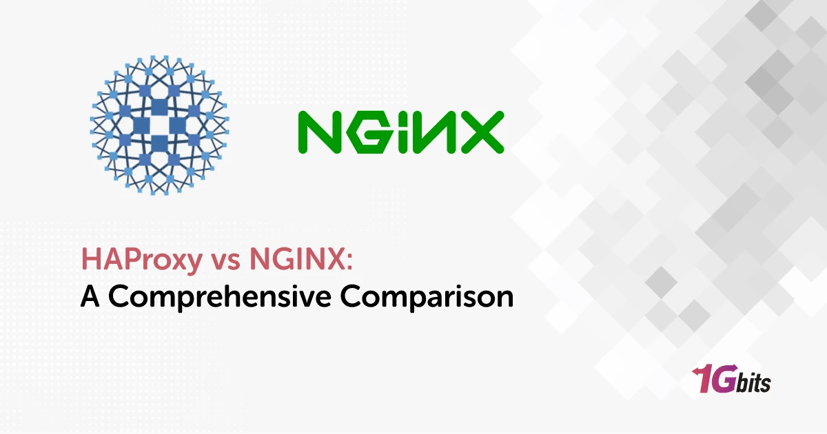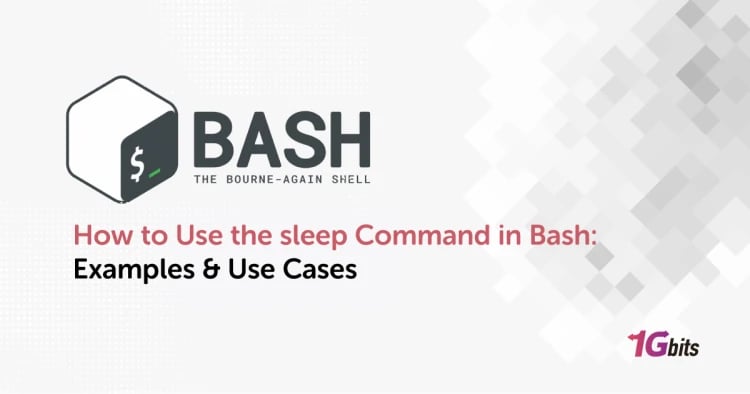These days, the demand for fast, reliable, and scalable web applications is higher than ever. As websites and applications grow in complexity and traffic, so too does the need for efficient load balancing and reverse proxy solutions. Two of the most popular tools in this domain are HAProxy and NGINX. This article delves into a detailed comparison of HAProxy vs NGINX, focusing on their features, performance, and use cases.
By the end, you'll have a clear understanding of which tool might be better suited to your needs. So read along and get all the information that you need.
HAProxy Overview
HAProxy, which stands for High Availability Proxy, is an open-source software solution introduced in 2000 by Willy Tarreau. It's primarily focused on load balancing and high availability, making it a crucial component for any web service that needs to handle a large volume of traffic reliably. HAProxy operates at Layer 4 (TCP) and Layer 7 (HTTP) of the OSI model, allowing it to distribute requests across multiple servers based on a variety of algorithms.
Key Features of HAProxy:
-
Advanced Load Balancing: HAProxy supports a range of load balancing algorithms, including round-robin, least connections, and source IP hashing. It excels in managing high traffic loads and ensuring that no single server becomes overwhelmed.
-
Health Checks: HAProxy provides detailed health checks for backend servers, automatically rerouting traffic if a server fails to respond appropriately.
-
SSL Termination: This feature allows HAProxy to handle SSL encryption and decryption, reducing the load on backend servers.
-
Session Persistence: HAProxy supports sticky sessions, ensuring that a user is consistently connected to the same server throughout their session.
-
Security Features: It offers detailed access control lists (ACLs), rate limiting, and the ability to inspect and modify HTTP requests to prevent web vulnerabilities.
NGINX Overview
NGINX, created by Igor Sysoev and released in 2004, began as a web server designed to address the C10k problem — the challenge of handling 10,000 concurrent connections. Over time, NGINX evolved into a versatile tool that functions not only as a web server but also as a reverse proxy, load balancer, and even an email proxy.
Key Features of NGINX:
-
Web Server Capabilities: NGINX is known for its ability to efficiently serve static content and manage multiple connections with minimal resource usage.
-
Reverse Proxy: It excels as a reverse proxy, directing client requests to appropriate backend servers while providing features like load balancing and SSL termination.
-
Caching: NGINX includes built-in caching capabilities, which can significantly reduce the load on backend servers and improve response times.
-
Performance: Thanks to its event-driven, asynchronous architecture, NGINX can handle a large number of concurrent connections without requiring extensive hardware resources.
-
Security: NGINX offers basic access control features, rate limiting, and protection against buffer overflow attacks.
If you’re still curious to know what is Nginx, read our blog post on this topic.
HAProxy vs NGINX Reverse Proxy
When it comes to reverse proxy capabilities, both HAProxy and NGINX offer robust solutions, but they approach the task differently.
HAProxy is primarily focused on load balancing and excels in distributing requests across multiple servers. It provides native support for reverse proxying, allowing it to route client requests efficiently while offering advanced features like detailed health checks and SSL termination. HAProxy's strength lies in its ability to manage traffic at a granular level, making it ideal for complex load-balancing scenarios where precise control over request routing is required.
NGINX, on the other hand, is often the go-to choice for reverse proxying because of its simplicity and efficiency. It was originally designed to handle many concurrent connections, and this capability extends to its reverse proxy features.
NGINX is particularly effective at serving static content while managing dynamic requests via reverse proxying. Its built-in caching and SSL termination features make it a versatile tool that can reduce the load on backend servers, improve response times, and enhance the overall performance of web applications.
HAProxy vs NGINX Performance
Performance is a critical consideration when choosing between HAProxy and NGINX, and each tool has its strengths in this area.
HAProxy is renowned for its ability to handle high volumes of traffic, particularly in dynamic content scenarios. It’s capable of managing up to 60,000 simultaneous connections and can theoretically handle up to 2 million requests per second.
This makes HAProxy particularly strong in environments where dynamic content handling and complex load-balancing requirements are prevalent. Its event-driven architecture allows it to efficiently manage traffic, ensuring high availability and reliability even under heavy loads.
NGINX is known for its superior performance in serving static content and managing concurrent connections. Its architecture allows it to handle between 512 and 1,024 requests per worker, making it extremely efficient for web applications with a heavy emphasis on static content or high numbers of simultaneous users.
HAProxy vs NGINX Load Balancer
Both HAProxy and NGINX are powerful load balancers, but they cater to slightly different needs.
HAProxy was designed with load balancing at its core. It supports a wide range of load balancing algorithms, including round-robin, least connections, and source IP hashing. This makes it highly versatile and capable of handling various traffic distribution scenarios. HAProxy’s strength in load balancing is further enhanced by its detailed health checks and session persistence features, which ensure that traffic is distributed evenly and that sessions remain consistent even if backend servers change.
NGINX also offers robust load balancing capabilities, with support for several algorithms like round-robin, least connections, and IP-hash. However, NGINX is particularly noted for its simplicity and ease of use. Its configuration for load balancing is straightforward, making it accessible even to those with minimal experience in web server management.
NGINX’s built-in caching and reverse proxy features also contribute to its effectiveness as a load balancer, reducing the load on backend servers and improving overall application performance.
HAProxy vs NGINX Benchmark
Benchmarking these two tools reveals their distinct strengths and performance characteristics.
HAProxy benchmarks typically showcase its ability to handle a vast number of connections and requests per second, particularly in dynamic content scenarios. Its architecture is optimized for high availability and reliability, making it a preferred choice for scenarios where uptime and consistent performance are critical. In benchmarks, HAProxy often outperforms NGINX in terms of the sheer number of connections it can manage simultaneously, especially when dealing with complex load-balancing tasks.
NGINX benchmarks, on the other hand, highlight its efficiency in serving static content and handling concurrent connections. NGINX’s event-driven architecture allows it to process requests with minimal resource usage, making it highly efficient even on modest hardware. In benchmarks focused on static content delivery and connection handling, NGINX typically demonstrates lower latency and faster response times compared to HAProxy.
HAProxy vs NGINX Ingress Controller
In the context of Kubernetes, both HAProxy and NGINX serve as ingress controllers, managing external access to services within a Kubernetes cluster.
HAProxy Ingress Controller offers a range of features tailored to the needs of enterprise-level Kubernetes deployments. It provides advanced load balancing, health checks, and detailed traffic management capabilities. HAProxy’s ingress controller is particularly valued for its granular control over traffic routing and its ability to handle complex traffic scenarios efficiently.
NGINX Ingress Controller, meanwhile, is one of the most popular ingress controllers in the Kubernetes ecosystem. It’s easy to deploy and configure, making it accessible even to those new to Kubernetes. NGINX’s ingress controller offers robust performance, efficient resource usage, and a range of features like SSL termination, path-based routing, and rate limiting. It’s particularly effective in environments where ease of use and integration with existing NGINX setups are important.
HAProxy vs NGINX Memory Usage
Memory usage is an important consideration, especially in resource-constrained environments.
HAProxy is known for its efficient memory usage, even under heavy traffic loads. Its ability to handle large numbers of connections without consuming excessive memory makes it a strong choice for environments where memory resources are limited. HAProxy’s architecture is optimized to balance the load efficiently while keeping memory usage within reasonable bounds, even when managing complex traffic patterns.
NGINX is also highly efficient in terms of memory usage, particularly when serving static content and managing many concurrent connections. Its event-driven architecture allows it to handle multiple requests simultaneously with minimal memory overhead. However, when dealing with dynamic content or complex load balancing, NGINX’s memory usage can increase, though it generally remains within manageable limits.
HAProxy vs NGINX Cost
Cost is always a significant factor when choosing between different technologies, especially for large-scale deployments.
HAProxy is open-source and free to use, with a strong community supporting its development and providing updates. However, for enterprise-level support, HAProxy Technologies offers a commercial version, HAProxy Enterprise, which comes with additional features, enhanced security, and professional support. The cost of HAProxy Enterprise can vary based on the level of support and features required, but it’s generally considered cost-effective for businesses that need reliable, high-performance load balancing and traffic management.
NGINX is also available as a free, open-source version. However, for businesses that require more advanced features, NGINX, Inc. offers NGINX Plus, a commercial version that includes additional capabilities such as advanced monitoring, high availability, and enhanced security features. The cost of NGINX Plus is subscription-based and varies depending on the level of support and features needed. While it may be more expensive than the open-source version, NGINX Plus is often seen as a worthwhile investment for businesses needing top-tier performance and support.
OPNsense HAProxy vs NGINX: Which One Is Better?
OPNsense is an open-source firewall and routing platform that supports the integration of both HAProxy and NGINX as add-ons. Choosing between HAProxy and NGINX within OPNsense depends largely on your specific needs for traffic management and performance.
HAProxy in OPNsense is typically preferred for scenarios where advanced load balancing and detailed control over traffic routing are required. It integrates smoothly with OPNsense’s firewall and routing features, allowing for sophisticated configurations that enhance security and performance.
NGINX in OPNsense, meanwhile, is often chosen for its ease of use and versatility. It’s particularly effective when you need a lightweight, efficient reverse proxy solution that integrates well with OPNsense’s existing features.







